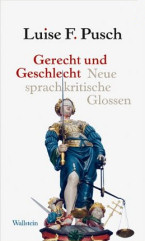
(Maria Meneghini-Callas; Maria Anna Cecilia Sofia Kalogeropoulos; Μαρία Καλογεροπούλου)
born on December 2, 1923 in New York
died on September 16, 1977 in Paris
US-American singer
100th birthday on December 2, 2023
Biography
One can experience Maria Callas in a fascinating role even today: a 1968 BBC production entitled Callas Conversations shows her with interview partner Lord Harewood, an English connoisseur of the opera. The backdrop: the luxuriously furnished salon of her apartment in Paris, where she spent her last years. The interviewer knew only too well: His interview partner, a Mediterranean beauty with large dark eyes and gorgeous, jet-black hair, dressed in embroidered silk, was the most renowned singer in the world. And she had the wonderful gift of explaining the complex in simple terms, the art of her singing.
She was born in New York on December 2, 1923 as the second daughter of Greek immigrants. She was not a happy child. There was a lot of arguing at home and she had few playmates.
But she was highly musical, loved to sing, and was already belting out the arias of Carmen as a little girl. She took part in singing competitions and received piano lessons. The driving force behind these activities was an extremely ambitious mother who wanted a brilliant career for her daughter. Maria would later accuse her mother of stealing her childhood from her; she only felt loved when she was singing. At the age of sixteen – her mother had in the meantime returned to Greece with her – Maria received a scholarship for vocal training at the leading conservatory in Athens. It was soon obvious that she had what it takes to become a prima donna assoluta, a singer who had mastered the lyrical and dramatic disciplines as well as coloratura singing and who could thus sing “everything.” Maria worked obsessively. At the age of 18 she appeared at the Greek National Opera in Athens as Tosca in the opera of the same name by Giacomo Puccini. But her real rise to fame came in Italy during the post-war years. In 1950 she sang at La Scala in Milan for the first time – one couldn't get any higher than that. She performed on all the great stages of the world; she was at the height of her fame during the 1950's. She ended her opera career, again as Tosca, in 1965 and after that continued to give concerts.
Her career was overshadowed by scandals. She was considered difficult. Her fiery temperament, an asset when performing, probably got the better of her all too often. Her artistic ambition was coupled with an uncompromising attitude; she made enemies, especially among her superiors. Their criticism was often unfair. At a gala performance of Norma in Rome, with the president of Italy in attendance, she became hoarse after the first act and was unable to continue. The artistic director badgered her, the audience ranted and on the following day the critics tore her apart in the newspapers. The rivalry between Maria Callas and Renata Tebaldi, the two “queens of La Scala,” remains legendary. Spiteful groups of fans even took pleasure in disrupting performances. Rivals? In temperament and in their singing skills they were completely different; all they had in common was global fame and a preference for the companionship of a poodle.
One stabilizing force in her turbulent life was her connection with Giovanni Battista Meneghini, an industrialist from Verona whom she had married as a young woman. He also became her manager. After ten years of marriage, she left him for Aristoteles Onassis, the wealthy Greek shipowner she had fallen in love with during a cruise in the Mediterranean. A life with the jet set began. She had hoped to start a family with Onassis, but he married Jacqueline Kennedy instead of her. According to one source, the child she was expecting (from Onassis) died hours after his birth. Maria Callas spent her last years alone. She was probably incapable of finding her way back to a normal life, as she had indeed never had one. She died in her apartment in Paris, reportedly of heart failure.
Maria Callas' fame was based above all on her uniquely expressive singing and acting on stage. Her repertoire was immense. For all her versatility, she concentrated on bel canto singing, on the operas of Rossini, Bellini, Donizetti and early Verdi. She was particularly magnificent in tragic roles such as Norma, Lucia di Lammermoor, Traviata and Cherubini's Medea. Her voice was not beautiful in the conventional sense; it transcended mere beauty and could even sound metallic in the high notes. Individual musical phrases were sung and flourishes placed so as to actually mirror the meaning of words. A trill could be sung to express feelings such as joy, sadness, or longing. Her technique was perfect; she mastered the many embellishments of bel canto, often veritable trapeze acts, seemingly effortlessly. In particular her coloratura passages in stratospheric heights would send her audiences into ecstasy and were accompanied by unending, thunderous applause. But her facial expressions and gestures alone were also of unimaginable intensity – it was impossible to take one's eyes off her, even when she was not singing. She was pure magic.
In Hommage à Maria Callas, Ingeborg Bachmann referred to her as “the only person who has rightfully claimed the stage in these past decades” – perhaps an attempt to describe genius? The Callas era ended half a century ago, but La Divina lives on.
(Text from 2021, translated with DeepL.com; edited by Ramona Fararo, 2023.)
Please consult the German version for additional information (pictures, sources, videos, bibliography).
Author: Ilse Hossius
Quotes
After the singer Elisabeth Schwarzkopf experienced Maria Callas in La Traviata in the Verona Arena in 1952, she announced that she would never sing as Violetta again: “What sense would there be in attempting a part performed so perfectly by a colleague?”
She is a woman, in some ways the most modern of all women, but inside her there is a woman of antiquity—mysterious and magical—whose feelings provoke in her an incredible inner conflict. (Pier Paolo Pasolini)
The middle register is captivatingly beautiful; the coloratura surprisingly brilliant; the pronunciation and nuance perfect. Although such details are perhaps of interest for singing teachers, they may be ignored. Because it is where there is expression, revelation—yes, even where the soul is laid bare—this is where “La Callas” is inimitable. Ms. Callas’ triumph and greatness cannot be explained with reference to her facial expressions or to her singing. What she offers is not mere acting or music: it is sublime art. (Joachim Kaiser)
If you hold the rights to one or more of the images on this page and object to its/their appearance here, please contact Fembio.



